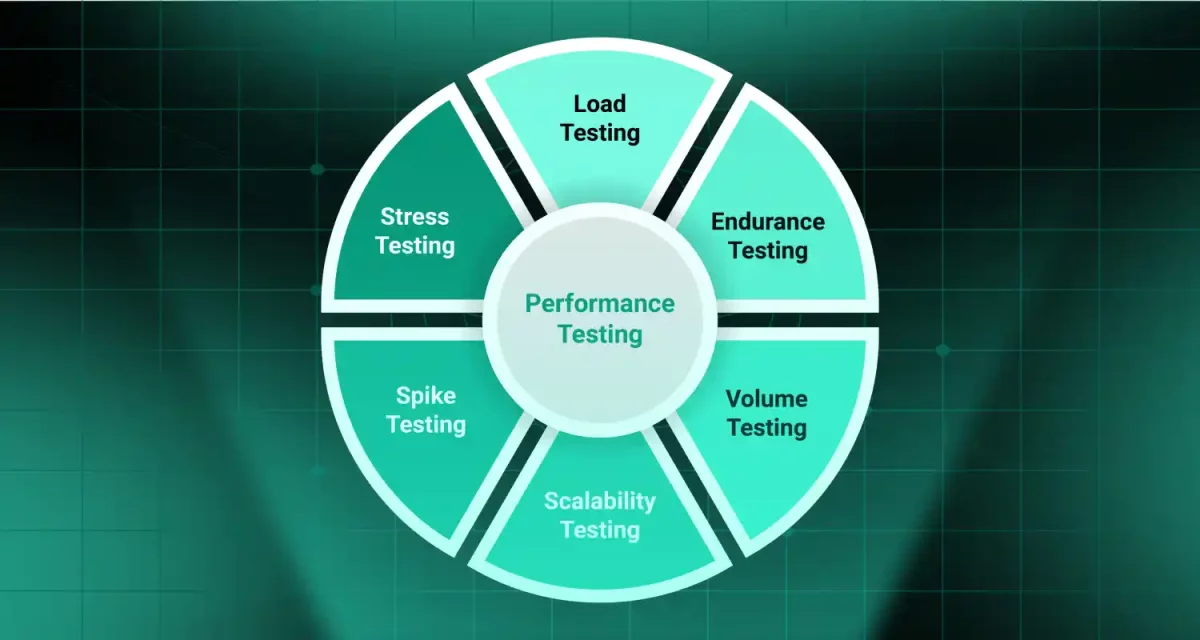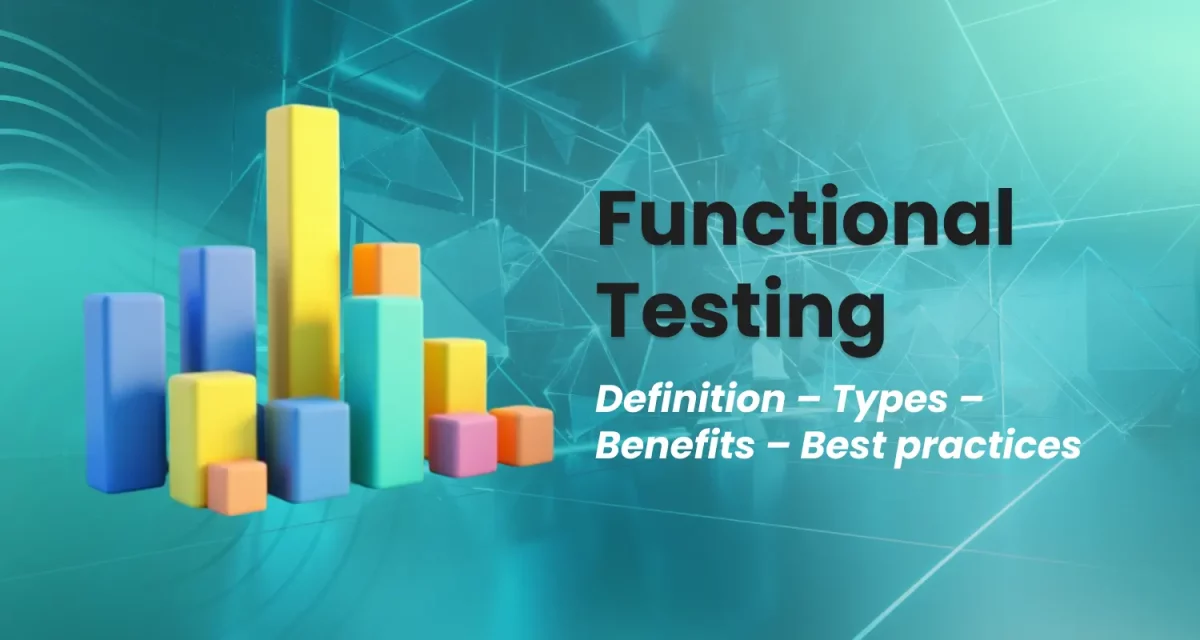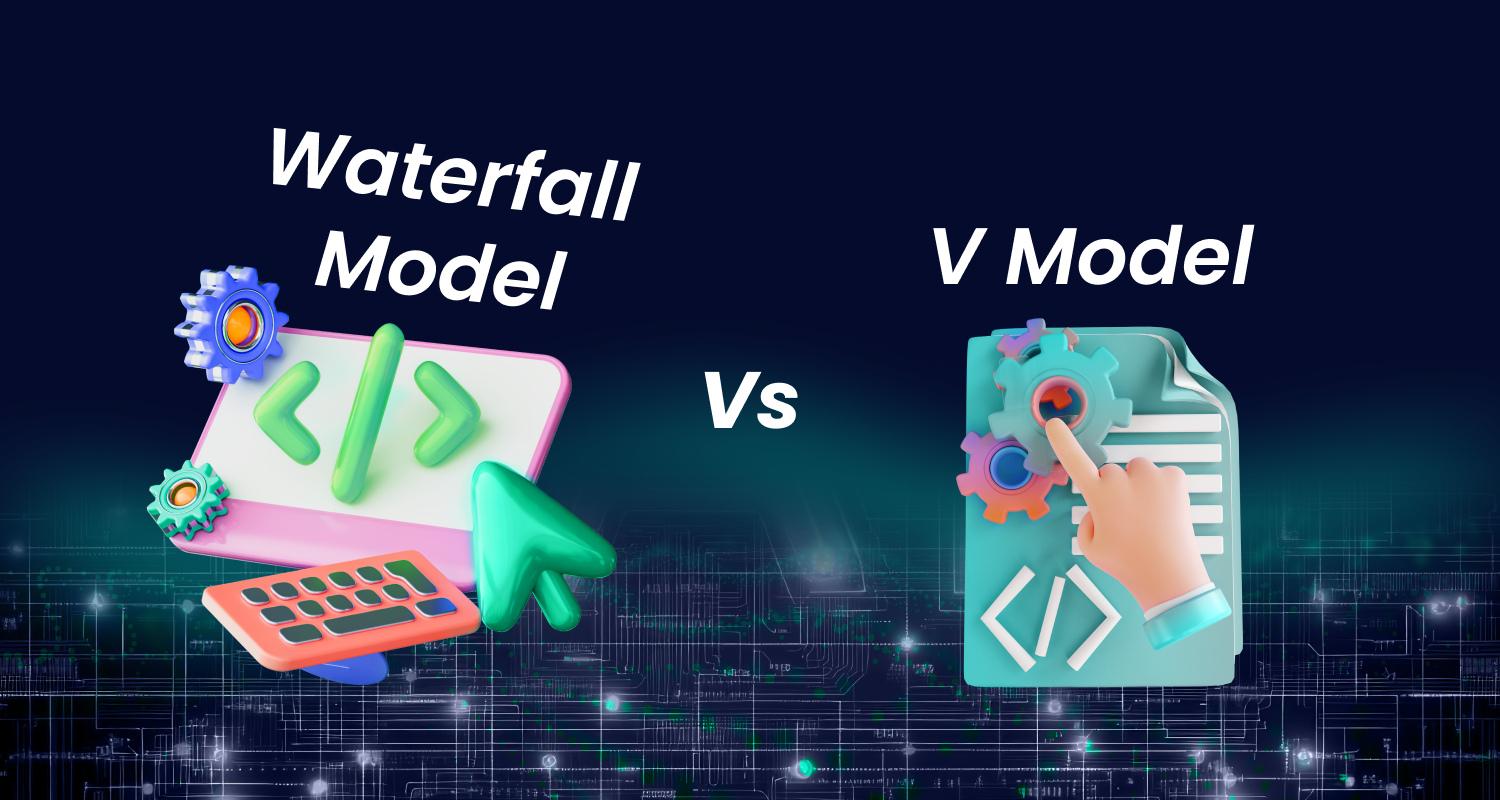
Software development methodologies provide structured frameworks for creating software. Choosing the right Software Development Life Cycle (SDLC) model is crucial for project success, impacting timelines, budget, and quality. The Waterfall and V-Models are two prominent methodologies: the Waterfall follows a linear, sequential approach, while the V-Model emphasizes verification and validation through parallel testing.
This article clarifies the differences between V-Model and Waterfall Model in software development, including its advantages, and suitable applications, helping you decide which model best fits your project needs.
1. Waterfall Model
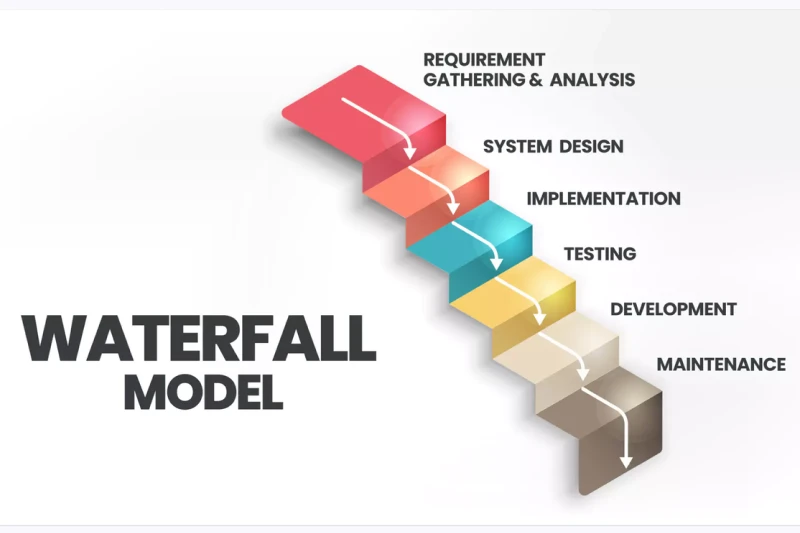
1.1. Definition
The Waterfall Model, a foundational methodology in software development, was first introduced by Winston W. Royce in his 1970 paper. This model embodies the concept of sequential development, where each phase of the SDLC is completed linearly, with no overlapping or iterative steps.
Imagine a waterfall cascading down a series of steps; each step represents a distinct phase, and once water flows to the next step, it cannot return. This analogy perfectly captures the essence of the Waterfall Model.
1.2. SDLC phases in the Waterfall Model
The Waterfall Model comprises distinct, sequential phases:
- Requirements: At the project’s outset, collecting and recording all necessary specifications is essential.
- Design: The system’s architecture and design are created based on the requirements.
- Implementation: Developers write the code based on the design specifications.
- Testing: The completed code is tested to identify and fix any defects.
- Deployment: The software is released to the end-users.
- Maintenance: Ongoing support and updates are provided to address issues and enhance the software.
Crucially, each phase must be completed before moving to the next. This linear, non-iterative nature is a defining characteristic of the Waterfall Model.

1.3. Advantages of the Waterfall Model
The Waterfall Model offers several advantages:
- Simplicity and ease of understanding: Its straightforward, linear structure makes it easy to understand and implement, especially for beginners.
- Clear documentation and defined stages: Each phase has well-defined deliverables and documentation, facilitating project management and tracking.
- Suitability for projects with stable requirements: It is ideal for projects where requirements are clearly defined and unlikely to change significantly.
1.4. Disadvantages of the Waterfall Model:
However, the Waterfall Model also has significant limitations:
- Inflexibility and difficulty in accommodating changes: Once a phase is completed, it is challenging and costly to revert or make changes. This lack of flexibility makes it unsuitable for projects with evolving requirements.
- Late detection of errors: Testing occurs late in the development cycle, meaning errors are often detected only after significant development effort, leading to costly rework.
- Unsuitability for complex or evolving projects: For projects with complex or rapidly changing requirements, the Waterfall Model’s rigidity can lead to project failure.
2. V-Model
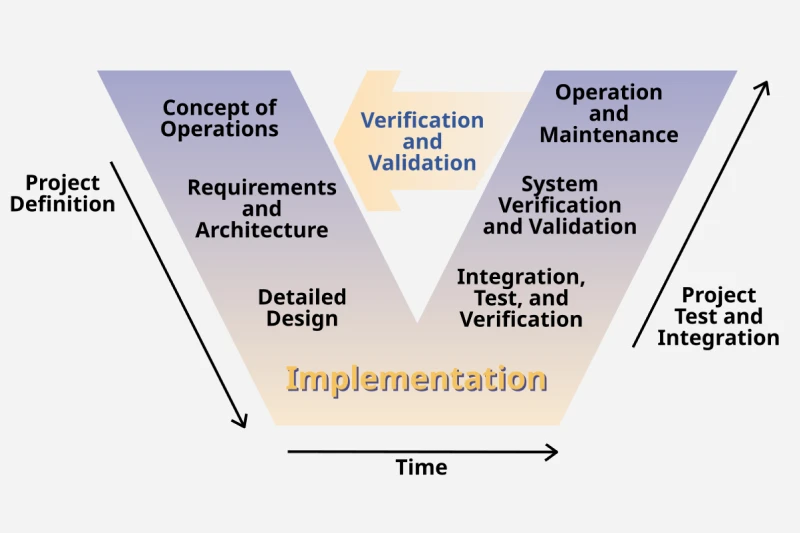
2.1. Definition
The V-Model, an extension of the Waterfall Model, was developed by Barry Boehm. It emphasizes verification and validation throughout the software development lifecycle (SDLC). Unlike the purely linear Waterfall Model, the V-Model highlights the relationship between each development phase and its corresponding testing phase.
This model aims to improve software quality by detecting errors early and ensuring that the final product meets user requirements.
Read more >>> Iterative and Incremental Development | Key differences, Benefits
2.2. SDLC phases in the V-Model
The V-Model’s structure resembles a ‘V’, where the left side represents the development phases and the right side represents the testing phases. Each development phase corresponds to a testing phase, ensuring continuous quality assurance.
- Requirements: User needs are gathered and documented. (Corresponds to Acceptance testing)
- High-level design (System design): The overall system architecture is designed. (Corresponds to System testing)
- Detailed design (Module design): Individual modules are designed in detail. (Corresponds to Integration testing)
- Coding: Code is written based on the detailed design. (Corresponds to Unit testing)
- Unit testing: Individual code units are tested.
- Integration testing: Integrated modules are tested for interaction issues.
- System testing: The complete system is tested against the system design.
- Acceptance testing: The system is tested against user requirements.
- Deployment: The software is released to the end-users.
- Maintenance: Ongoing support and updates are provided.
Verification ensures that the software is being built correctly (‘Are we building the product right?’), focusing on the process and deliverables of each development phase.
Through validation, we confirm that the software being developed addresses the user’s needs, by examining the final product’s functionality.
The left side of the ‘V’ represents verification activities, while the right side represents validation activities. Each level on the left side is verified by its corresponding level on the right side. This parallel testing approach allows for early error detection and correction.

2.3. Advantages of the V-Model
The V-Model offers several key advantages:
- Early detection of errors: Verification and validation at each phase lead to early identification and resolution of defects.
- Improved quality and reliability: The parallel testing approach enhances the overall quality and reliability of the software.
- Enhanced project management and control: The clear mapping of development and testing phases provides better project control.
- Clear testing levels: Defined testing levels ensure thorough testing at each stage.
2.4. Disadvantages of the V-Model
However, the V-Model also has limitations:
- Rigidity and limited flexibility: Like the Waterfall Model, it can be rigid and difficult to adapt to changes.
- Requirement for early and stable requirements: It relies on clearly defined and stable requirements from the outset.
- Potential for increased documentation and overhead: The rigorous verification and validation process can lead to increased documentation and overhead.
Read more >>> Differences Waterfall Model vs. Agile Methodology in Software Development
3. Key differences between V-Model and Waterfall Model
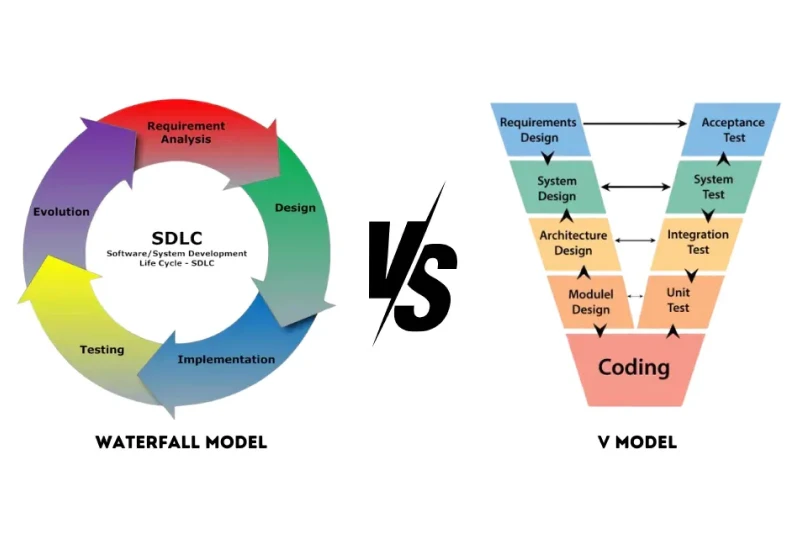
3.1. Key differences
Sequential vs. Verification and Validation:
- The Waterfall Model follows a strict sequential flow, where each phase is completed before moving to the next.
- The V-Model emphasizes verification and validation at each stage, creating a parallel testing process that aligns with development phases.
Testing approach (Late vs. Parallel):
- In the Waterfall Model, testing occurs late in the development cycle, after the implementation phase.
- The V-Model integrates testing activities throughout the development process, with testing phases running parallel to corresponding development phases.
Flexibility and adaptability:
- The Waterfall Model is highly inflexible, making it difficult to accommodate changes once a phase is completed.
- The V-Model offers slightly more adaptability through early verification, but it remains relatively rigid compared to agile methodologies.
Risk management:
- The Waterfall Model carries a higher risk for complex or changing projects due to late error detection and inflexibility.
- The V-Model mitigates risk through early verification and validation, allowing for timely detection and correction of defects.
3.2. When to use V-Model vs Waterfall Model
Waterfall Model:
- Ideal for simple projects with clearly defined and stable requirements.
- Suitable for projects where changes are minimal and well-understood.
- Best for projects with predictable timelines and budgets.
V-Model:
- Suitable for complex, high-risk projects that require rigorous testing and validation.
- Ideal for projects where quality and reliability are critical.
- Appropriate for projects with strict regulatory or safety requirements.
3.3. Advantages of V-Model over Waterfall Model
- Focus on quality and reliability: The V-Model’s emphasis on verification and validation leads to higher quality and more reliable software.
- Early error detection: Parallel testing enables early identification and resolution of defects, reducing rework and costs.
- Improved project management: The clear mapping of development and testing phases enhances project control and tracking.
3.4. Disadvantages of Waterfall Model Compared to V-Model
- Late error detection: Errors are often discovered late in the development cycle, leading to costly rework and delays.
- Inflexibility: The rigid structure makes it difficult to accommodate changes, hindering adaptability.
- Higher risk for complex projects: The linear approach increases the risk of failure for complex or evolving projects.
|
Feature
|
Waterfall Model
|
V-Model
|
|
Development flow
|
Sequential
|
Sequential with parallel testing
|
|
Testing timing
|
Late, after implementation
|
Early, parallel to development
|
|
Flexibility
|
Low
|
Relatively low
|
|
Error detection
|
Late
|
Early
|
|
Risk management
|
Higher risk for complex projects
|
Lower risk due to early verification
|
|
Suitability
|
Simple, stable projects
|
Complex, quality-critical projects
|
|
Verification/Validation
|
Minimal
|
Heavy emphasis
|
Read more >>> Extreme Programming (XP) | Definition, 5 Core Value, Pros and Cons
4. Factors to consider when choosing between the V-Model and Waterfall Model
- Project complexity:
- Simple, well-defined projects with stable requirements favor the Waterfall Model.
- Complex, high-risk projects with stringent quality requirements suit the V-Model.
- Requirement stability:
- If requirements are likely to change, the Waterfall Model’s rigidity becomes a significant drawback.
- The V-Model, while still requiring relatively stable requirements, offers slightly more flexibility through early verification.
- Risk tolerance:
- Projects with a low-risk tolerance, where errors must be detected early, benefit from the V-Model’s rigorous testing.
- Projects with predictable outcomes and minimal risk can use the Waterfall Model.
- Project size and duration:
- Smaller, shorter projects may find the simplicity of the Waterfall Model sufficient.
- Larger, longer projects with critical quality needs often require the V-Model’s structured approach.
- Team expertise:
- The V-model is a good fit if the team is well-versed in structured methodologies and thorough documentation.
- The Waterfall model may be easier to implement if the team is new to structured methodologies.
5. The bottom lines
The core difference between the V-Model and the Waterfall Model lies in their approach to testing and flexibility. The Waterfall Model is linear and best suited for simple projects with stable requirements, while the V-Model employs parallel testing for complex, quality-focused projects. Therefore, choosing the right methodology is crucial for success, as each has distinct advantages and disadvantages.
However, the evolution of software development emphasizes flexibility, with Agile and iterative approaches gaining prominence. To that end, we invite you to share your experiences with different SDLC models in the comments and suggest further reading on Agile methodologies, iterative development, and project management best practices.



